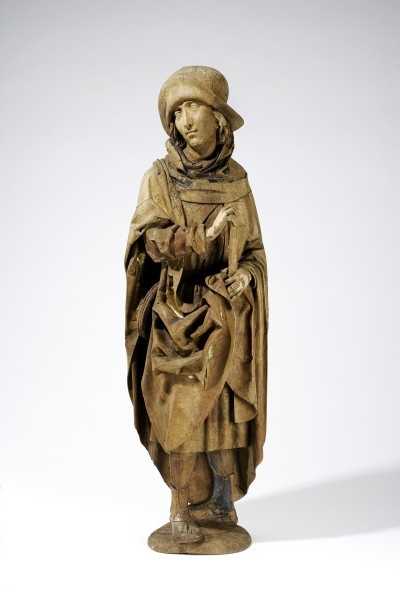Die jugendlich wirkende Figur ist durch den nur noch partiell erhaltenen Stab, die am Gürtel befestigte Flasche und den Hut als Pilger erkennbar. Um sie eindeutig als Jakobus zu identifizieren, fehlt ihr allerdings die meist am Hut befestigte Jakobsmuschel. Daher könnte es sich bei der Figur auch um den hl. Wendelin handeln, der ebenfalls als Pilger oder auch als Hirte dargestellt wurde. Dieser wollte, von Schottland kommend, nach Rom pilgern, gelangte aber nur bis Trier, wo er sich als Hirte verdingte und schließlich Abt eines kleinen Klosters wurde. Vor allem im Rhein-Mosel-Gebiet und in Bayern war seine Darstellung weit verbreitet. Er ist Patron der Bauern, der Hirten und ihres Viehs.
Ankauf 1912.
en

